Port Life
Located between land and sea, the port is a gateway to the world and sees the arrival and departure of countless ships from every continent.
Port life
Located between land and sea, the port is a gateway to the world and sees the arrival and departure of countless ships from every continent.
Given the technical advances in navigation and developments in port equipment, the time spent supplying vessels decreased significantly since the early history of the Merchant Navy. From coal mining operations, where sacks or baskets of coal were loaded on board, to transporting live animals to feed the passengers and crew, the task was long and laborious. Later advancements, such as heating oil and electricity, allowed the use of cold rooms and would revolutionize port professions.
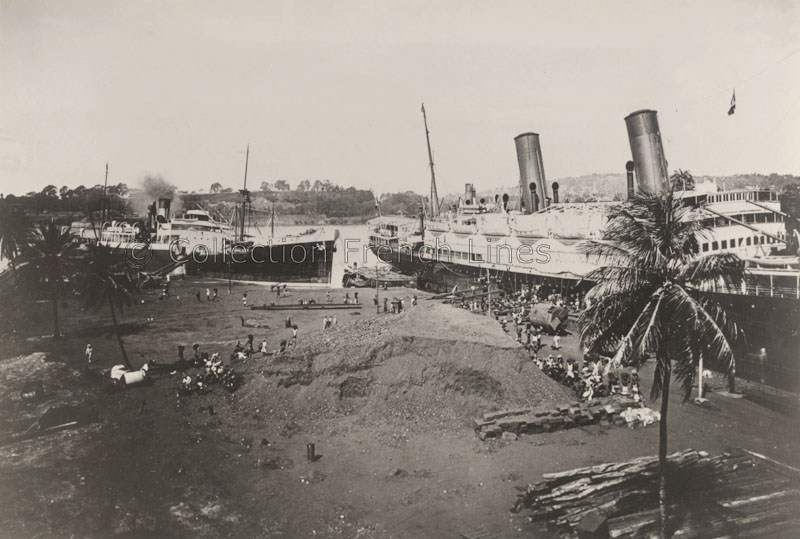
Anonymous. Coal mining operations for vessel Pellerin de Latouche (CGT 1923) at Fort-de-France

Anonymous. Loading supplies onto the liner Liberté (CGT 1950)

Anonymous. Coal mining operations for vessel La Touraine (CGT 1891)
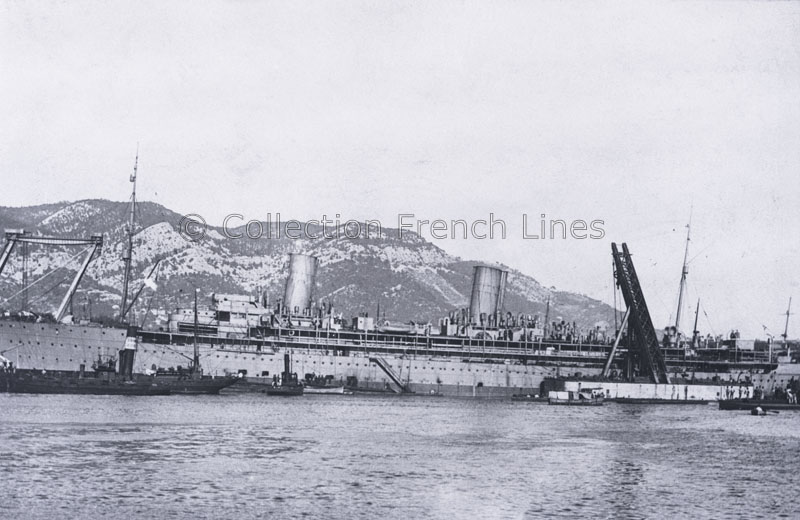
Anonymous. Suppling the vessel La Savoie (CGT 1901) or La Lorraine (CGT 1900) in Toulon
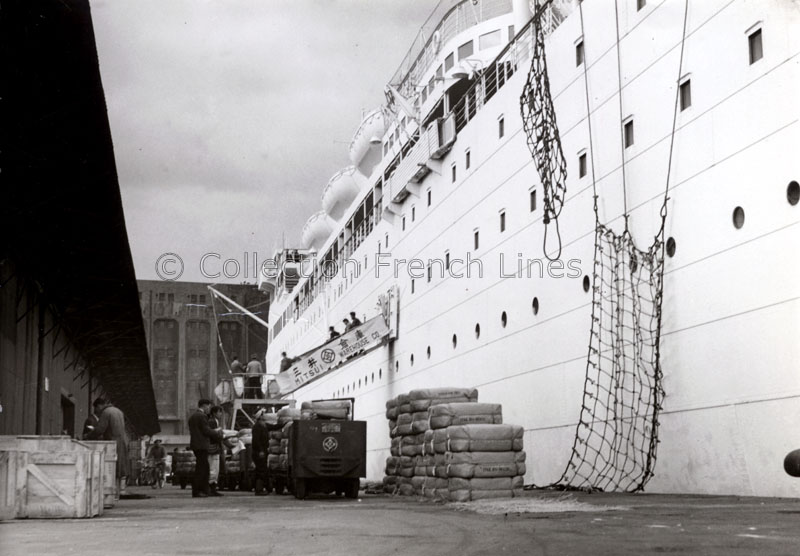
Anonymous. Loading the liner La Marseillaise (MM 1949) in Kobe

Anonymous. Checking and loading supplies onto the liner France (CGT 1962)

Anonymous. Coal mining operations at Fort-de-France
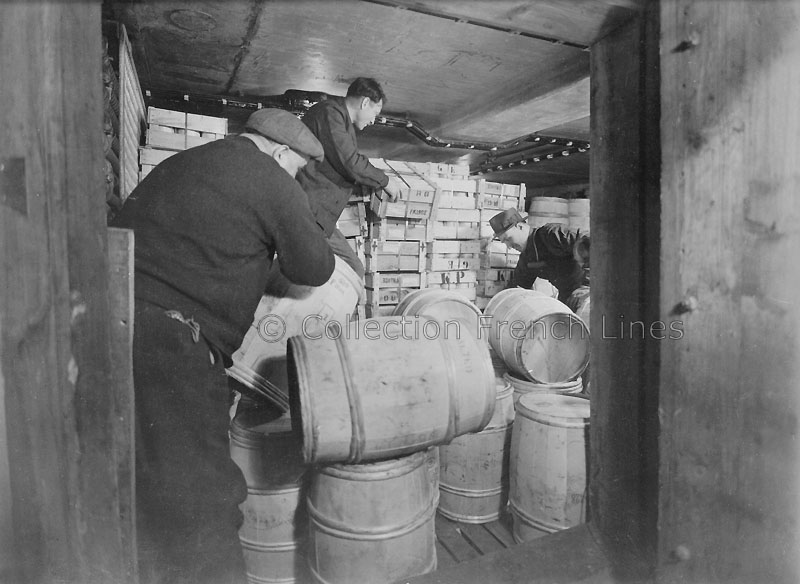
Anonymous. Stowing barrels on board the liner Normandie (CGT 1935)
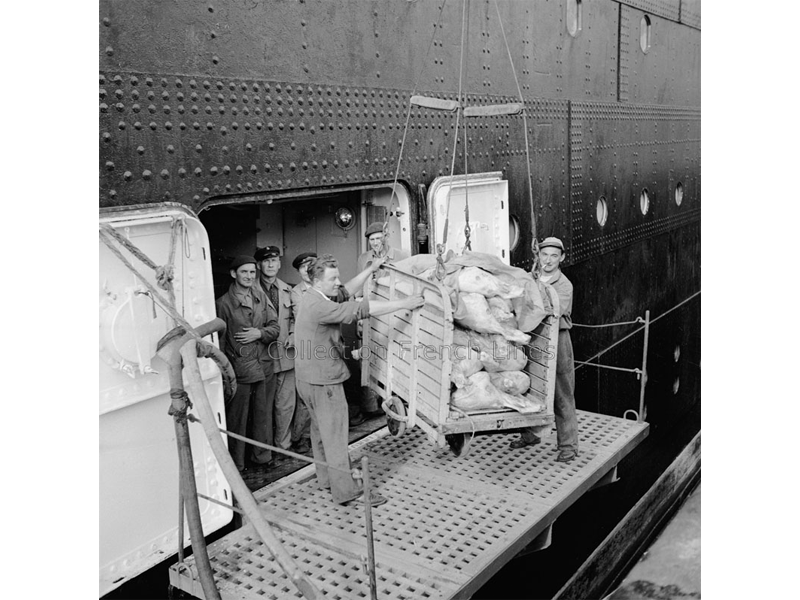
Anonymous. Loading supplies on board the liner Liberté (CGT 1950)
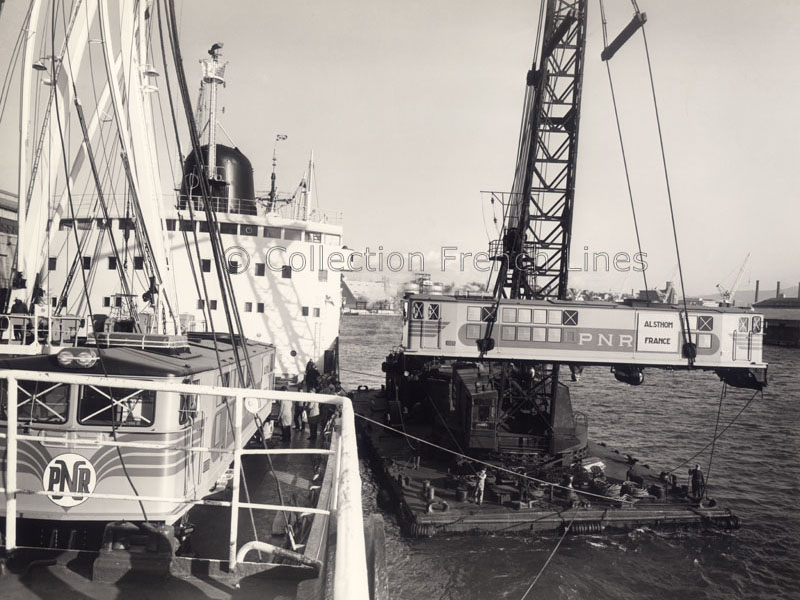
René Simon. Loading Alstom locomotives onto the cargo ship Martiniquais (MM 1960)
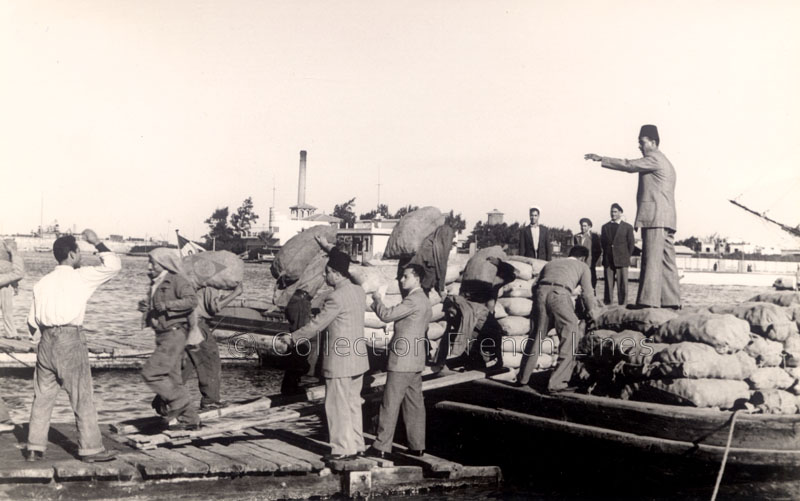
Anonymous. Loading sacks onto a barge

Anonymous. Loading cattle onto the cargo ship Mauricien (MM 1960)
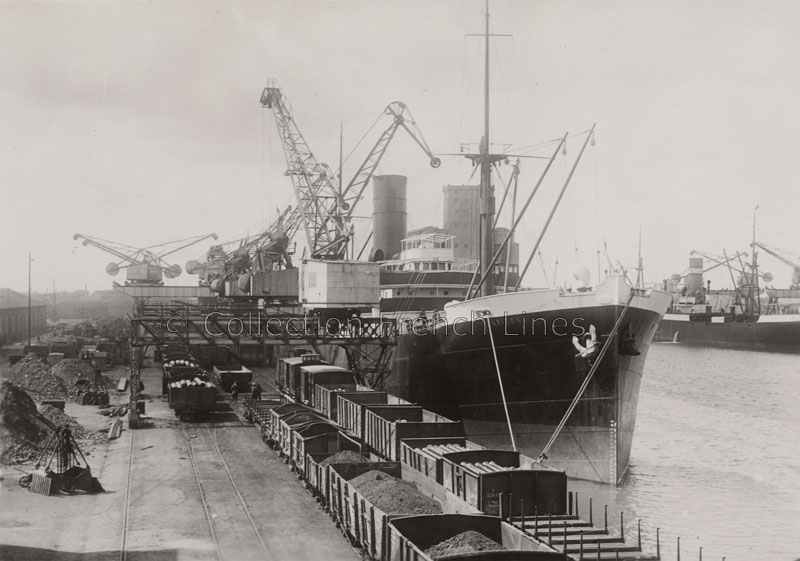
Anonymous. Docked cargo ship Arizona (CGT 1928)
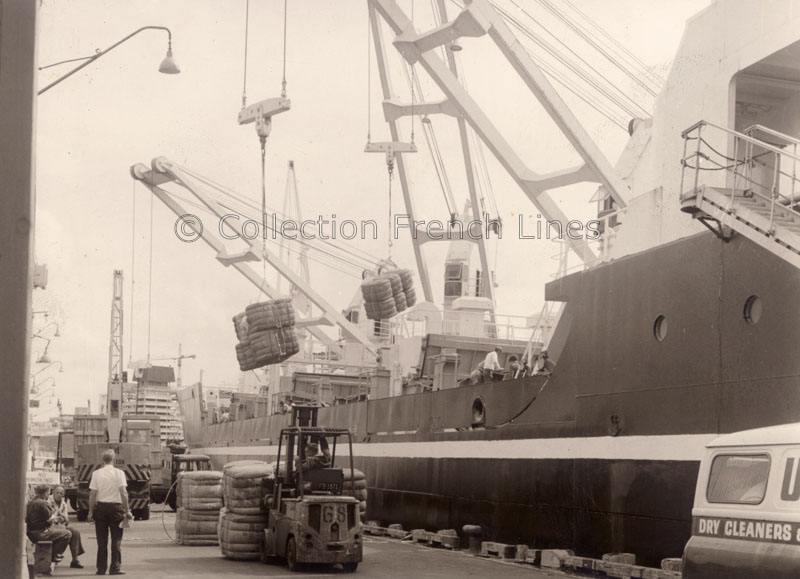
Anonymous. Loading bales of wool on board cargo ship Zambèze (MM 1971)
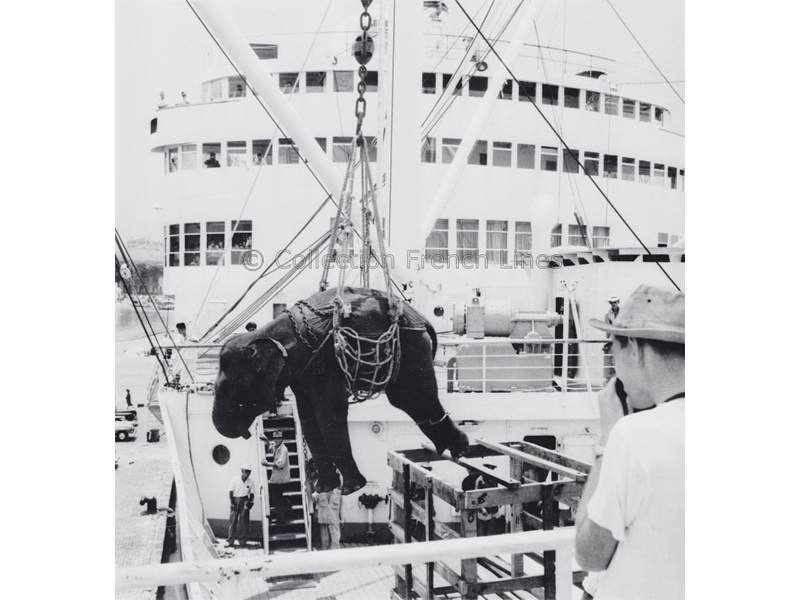
Anonymous. Transporting an elephant onto a vessel
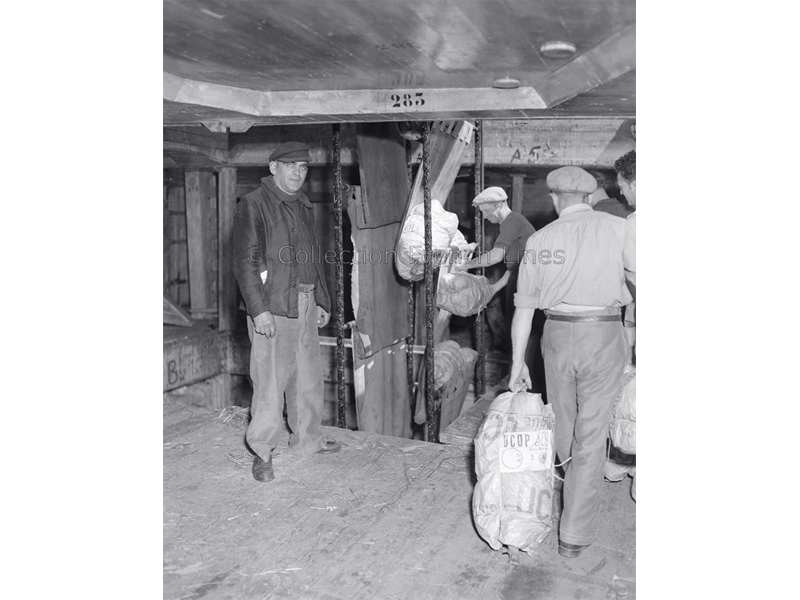
Anonymous. Unloading banana bunches from cargo ship Barfleur (CGT 1939) at Dieppe
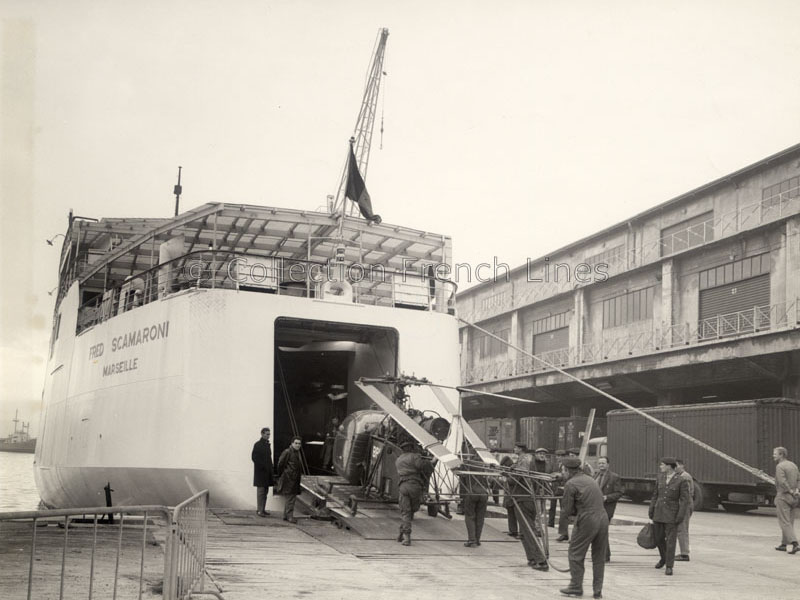
Anonymous. Loading a helicopter onto the liner Fred Scamaroni (CGT 1966)

Anonymous. Handling sacks on board a ship at Le Havre

Anonymous. Loading a horse on board a ship in the port at Boulogne
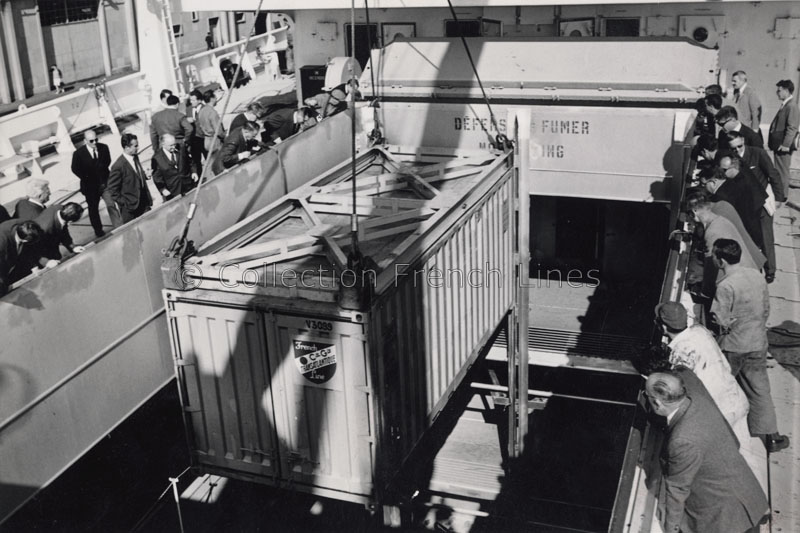
Anonymous. Loading trial for a 20-foot container on board cargo ship Suffren (CGT 1967)
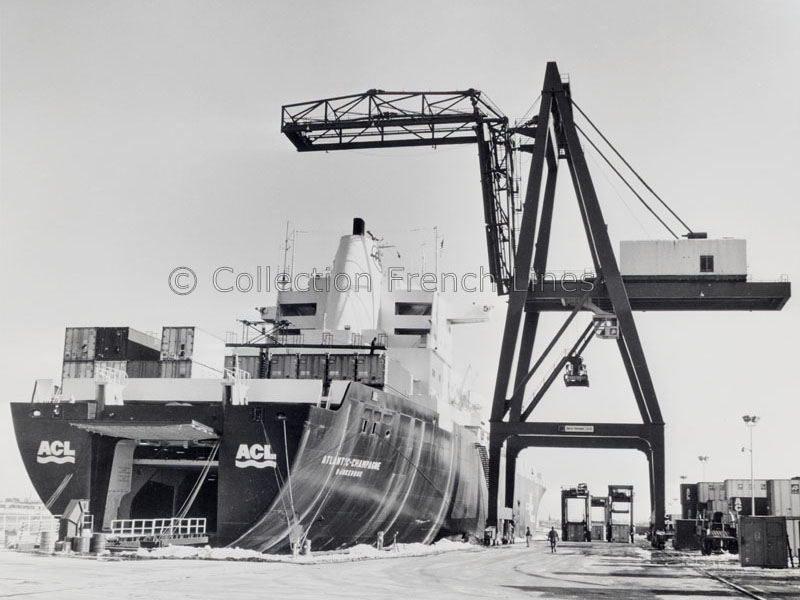
Anonymous. Container-ship Atlantic-Champagne (CGT 1969) in operation
The development of cargo ships, especially the arrival of the container-ship, improved the loading and unloading of vessels over time. These once burdensome operations required a significant number of men per ship to work under tough conditions. Bales of cotton, sacks of coffee, fruit, cereals, vehicles, animals, oil and gas—shipping companies have handled the transportation of all types of goods by sea for centuries.
Transporting seagoing personnel, postal packages, baggage and passengers—as well as cargo, vehicles and even pet animals—requires flawless organization and seamless coordination before each departure. A flurry of activity gripped the vessel, hangars and docks until the sirens were finally sounded, signaling the departure.
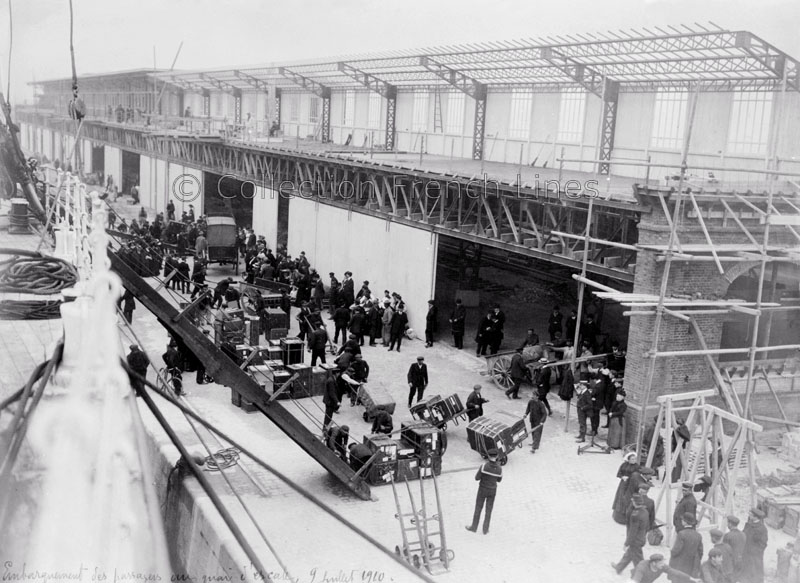
Anonymous. Transporting baggage at the wharf in Le Havre, 1910

Byron Company. Passengers and baggage handlers at French Line Pier 59 in New York
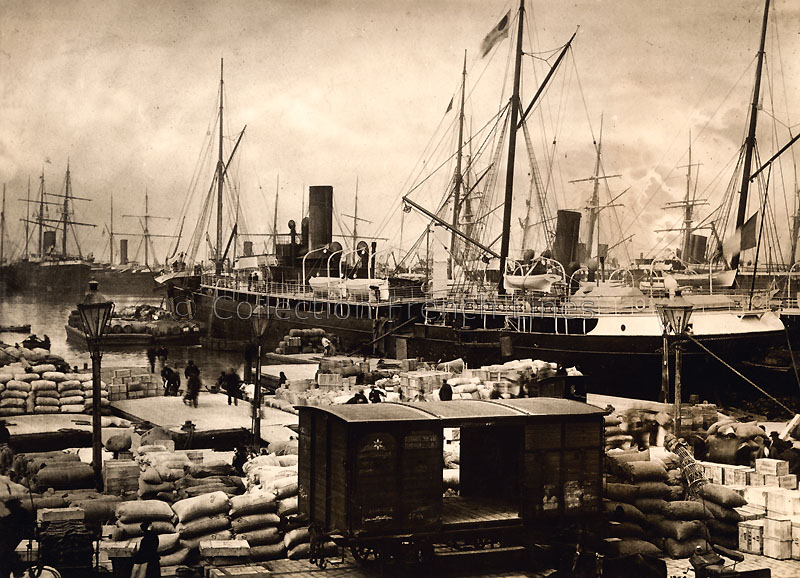
Anonymous. The liner Ville d’Alger (CGT 1890) in Marseille
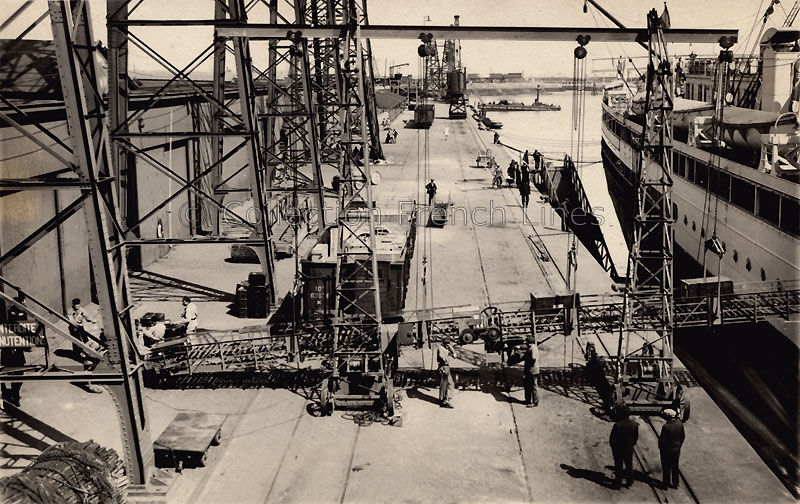
Anonymous. Unloading baggage from a liner belonging to French Line at Le Havre (Collection: Ms. Sabarly)
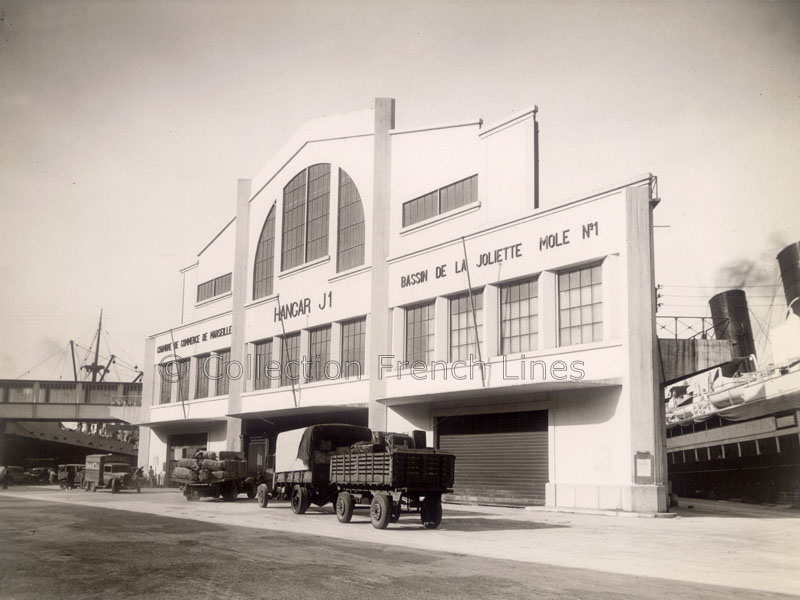
Anonymous. Arrival of goods to the J1 hangar in Marseille

Anonymous. Passengers boarding the liner Ville d’Alger (CGT 1935)
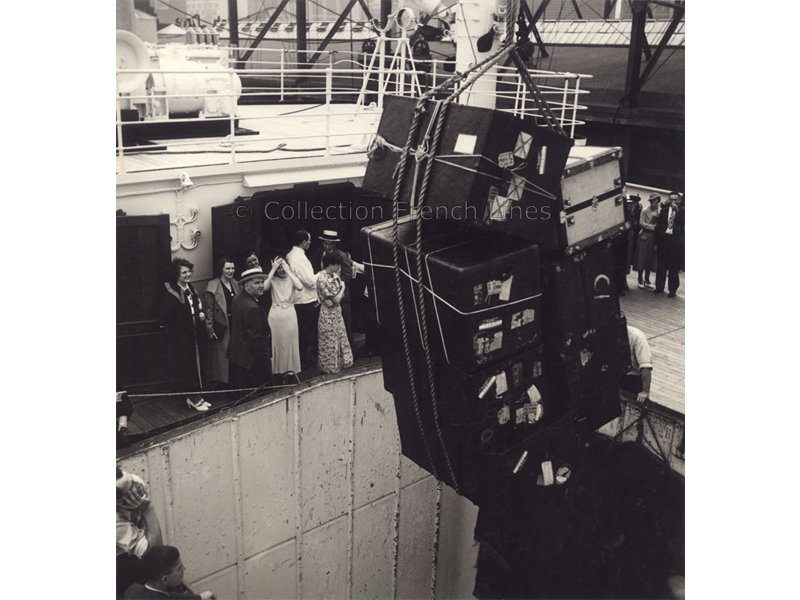
Anonymous. Transporting baggage onto a French Line vessel
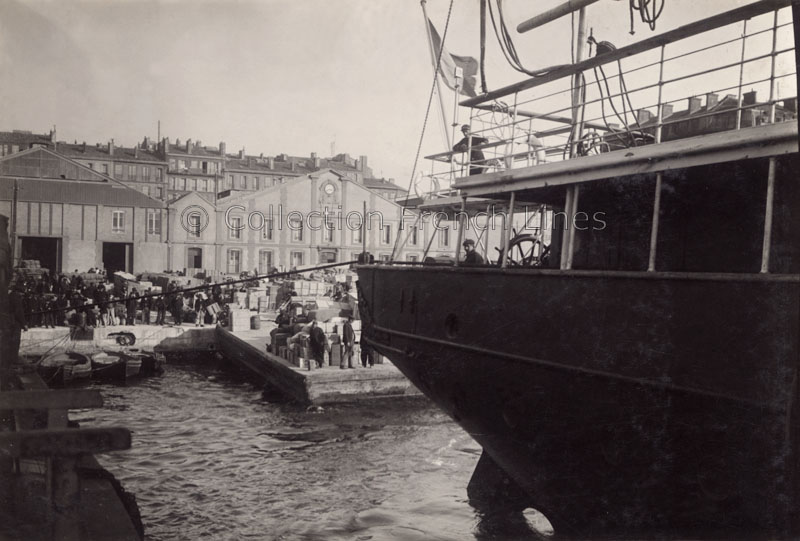
Anonymous. The liner Ville de Bône (CGT 1880) in Marseille
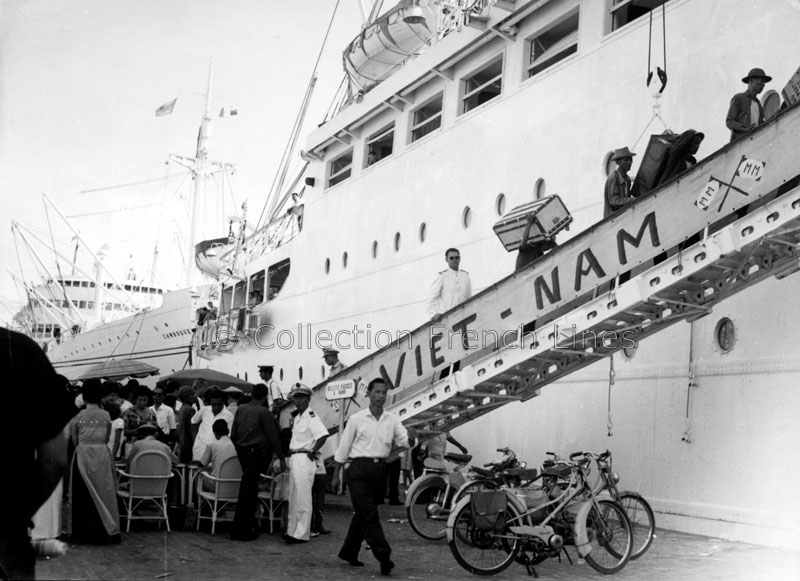
Conté. Liners Cambodge (MM 1953) and Viet-Nam (MM 1952) in Saigon
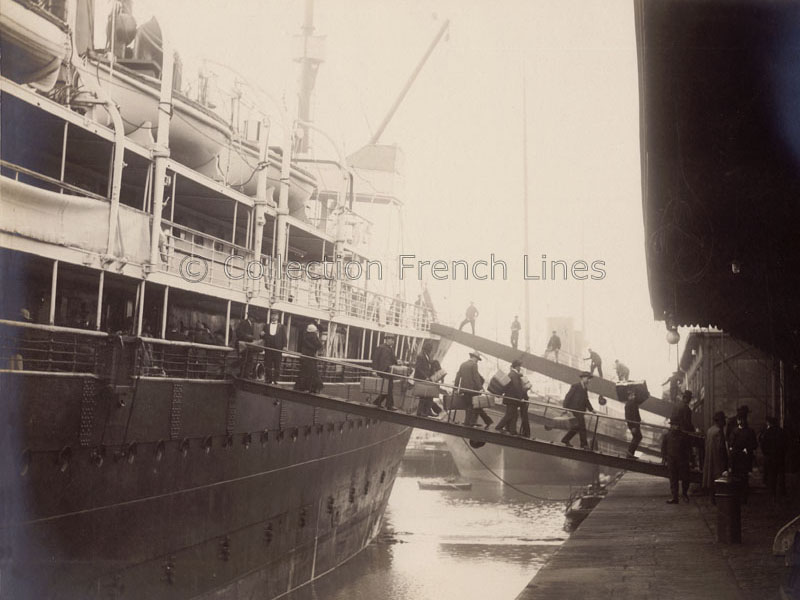
Anonymous. La Lorraine (CGT 1900) or La Savoie (CGT 1901) at the Quai des Transatlantiques in Le Havre
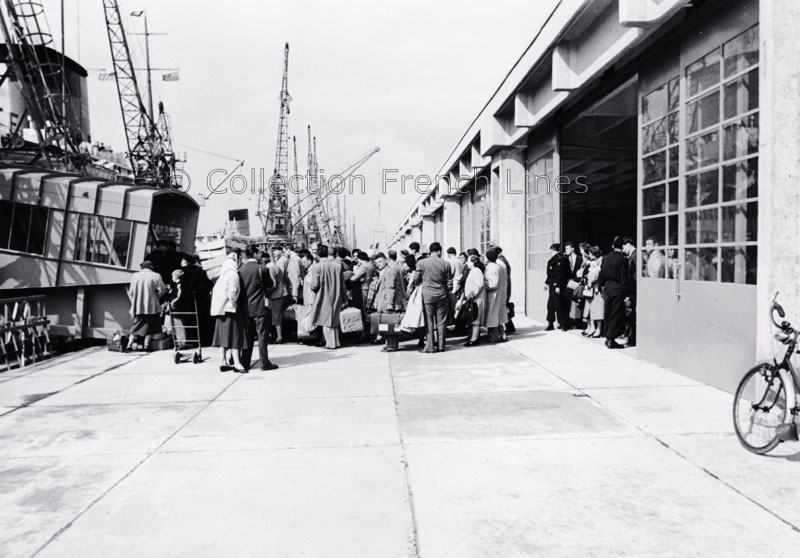
Anonymous. Passengers boarding the liner Liberté (CGT 1950) in Le Havre
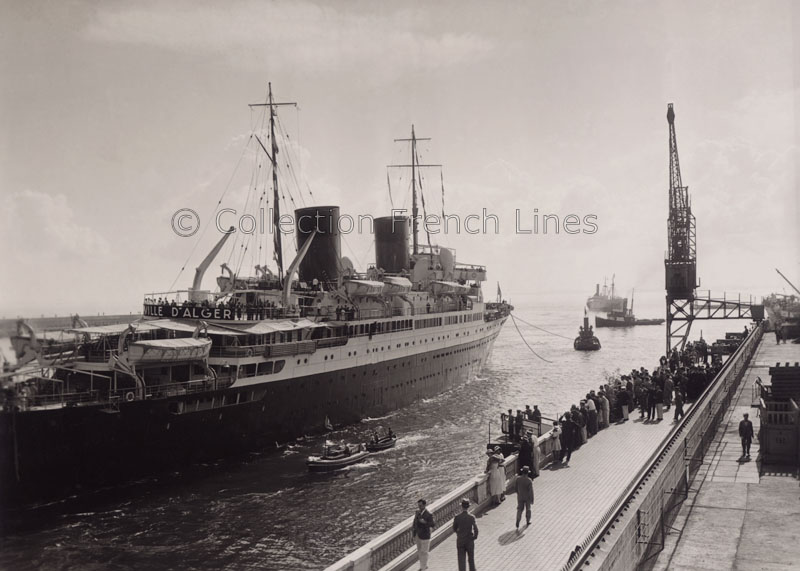
Anonymous. Departure of the liner Ville d’Alger (CGT 1935)

Anonymous. Passengers disembarking from liner La Lorraine (CGT 1900) at the Quai des Transatlantiques in Le Havre
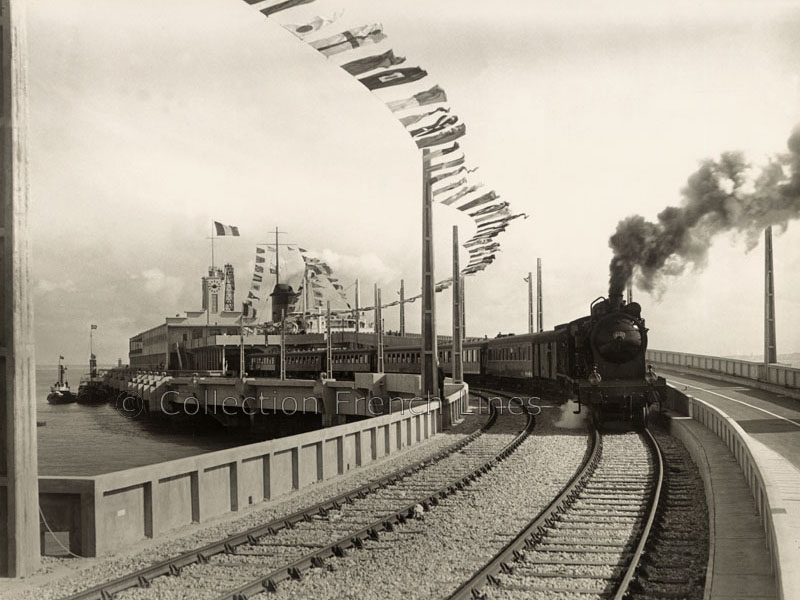
Anonymous. Marine terminal at the pier in Verdon

Byron Company. Entrance of French Line Pier 59 in New York

Anonymous. French Line marine terminal in 1901
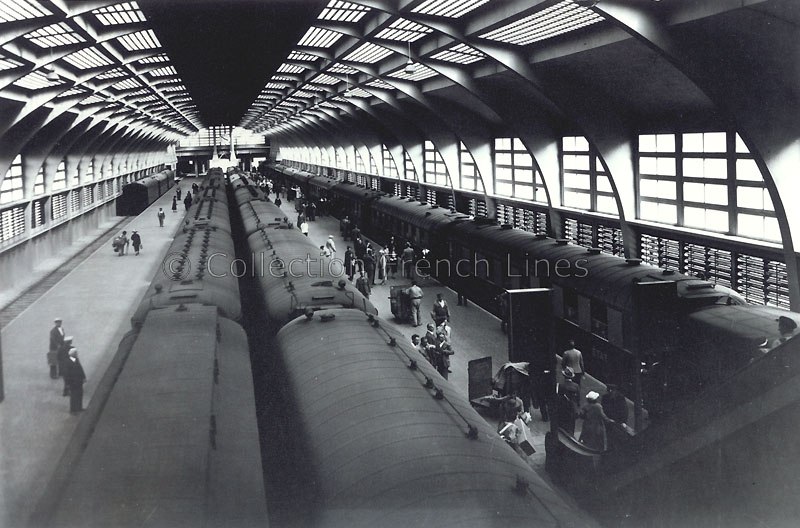
Anonymous. French Line marine terminal in Le Havre, 1935

Anonymous. Customs hall of the CGT marine terminal in Le Havre, 1935

Anonymous. The liner Liberté (CGT 1950) alongside the French Line marine terminal in Le Havre
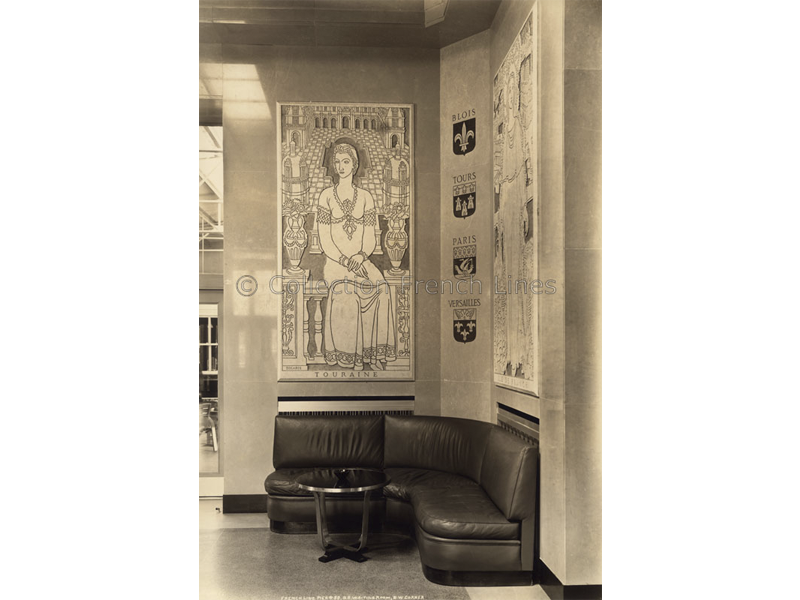
Byron Company. Waiting room of French Line Pier 88 in New York

Anonymous. Gangway belonging to the French Line marine terminal in Bordeaux
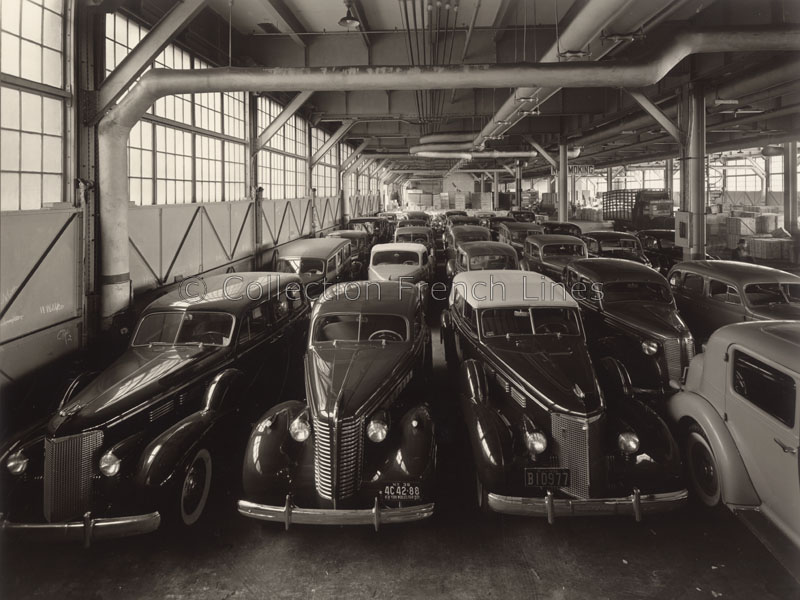
Byron Company. Goods and automobiles at the French Line Pier 88 in New York

Anonymous. French Line marine terminal in Le Havre, 1935
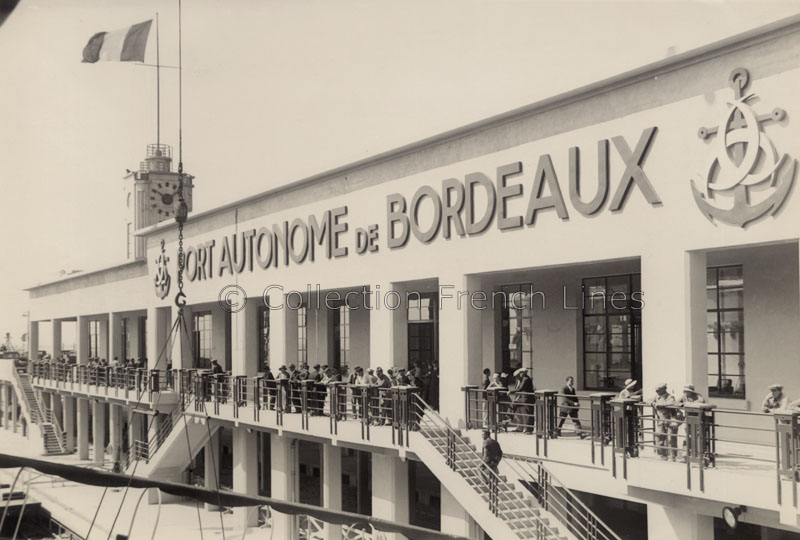
Anonymous. Marine terminal of the port jetty in Verdon

Anonymous. Departure of liner France (CGT 1962) from French Line Pier 88 in New York
The marine terminals built in major ports were sometimes shared by several companies or for the sole use of one particular company. Often directly served by a rail line, the largest marine terminals were equipped with covered docks where waves of passengers disembarked from their trains. As soon as they arrived, travelers were directed to the appropriate areas according to their class. Passengers could then board the ship using the gangways after all formalities were carried out. Once on board the deck, it was time to say a final farewell, which was often celebrated by throwing confetti.